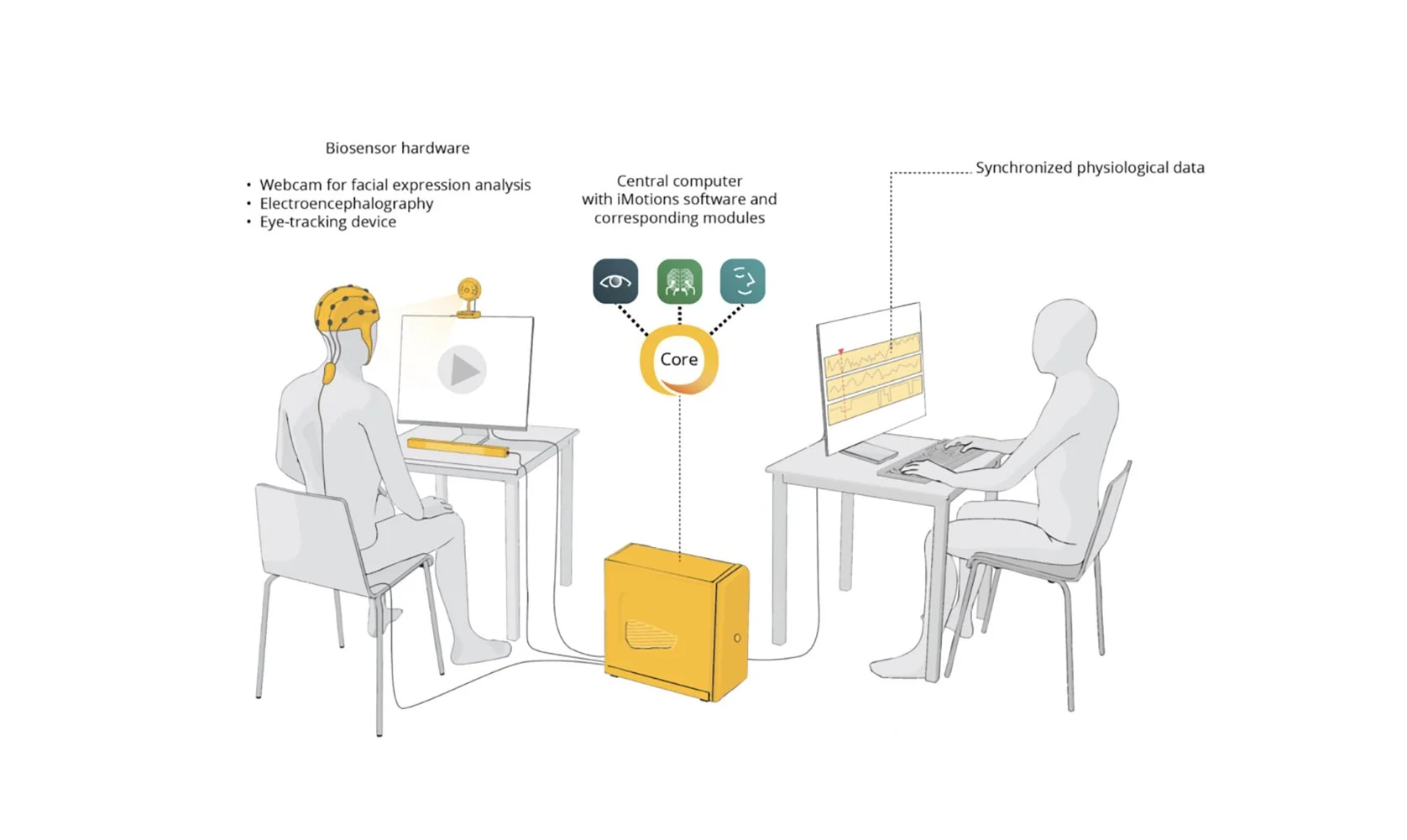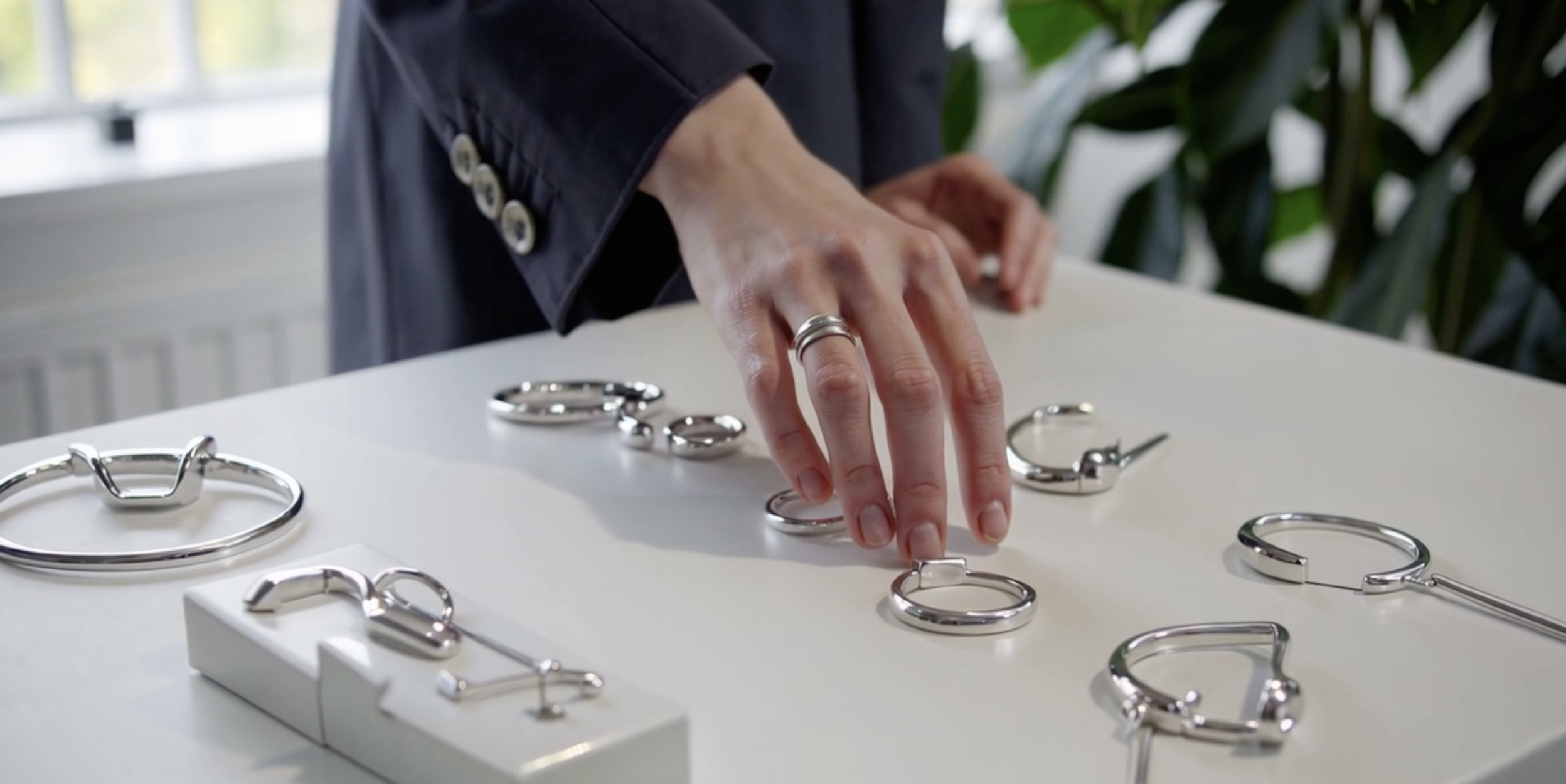Full business and design process
This project follows the Design Thinking process – from user insight and problem definition to ideation, prototyping, and testing. It’s a human-centered approach that ensures the final concept is both relevant and realistic – balancing emotional value with business potential.
Background
Empathize
The jewellery industry is in a trust crisis. Consumers—especially younger ones—doubt ESG claims, question sustainability promises, and feel overwhelmed by marketing noise. As part of my KEA education, I set out to explore how neuromarketing could uncover what really resonates.
The focus was Pandora’s ESG communication. Using neuromarketing tools like eye-tracking, facial coding, and galvanic skin response, I examined how consumers emotionally and subconsciously responded to different sustainability claims and visual executions.
The Challenge
Define
How can jewellery brands communicate sustainability in a way that feels credible and emotionally engaging—without falling into greenwashing or abstract jargon?
The goal was not only to evaluate one campaign but to understand how to better design brand communication that earns attention, trust, and emotional response.
Research Setup & Scenarios
Ideate
To test the emotional impact of sustainability claims, I created a 10-slide presentation mimicking a brand campaign journey. Slides varied in:
Claim specificity: Generic ESG vs. concrete claims (e.g. CO₂ of lab-grown diamonds)
Visual focus: Faces, products, emotional storytelling
Copy tone: Abstract vs. concrete, facts vs. feelings
Tools used:
iMotions (eye-tracking, GSR, emotion detection)
Facial Action Coding System (FACS)
Area of Interest (AOI) mapping
Target audience: Women aged 20–35, jewellery wearers who value sustainability.
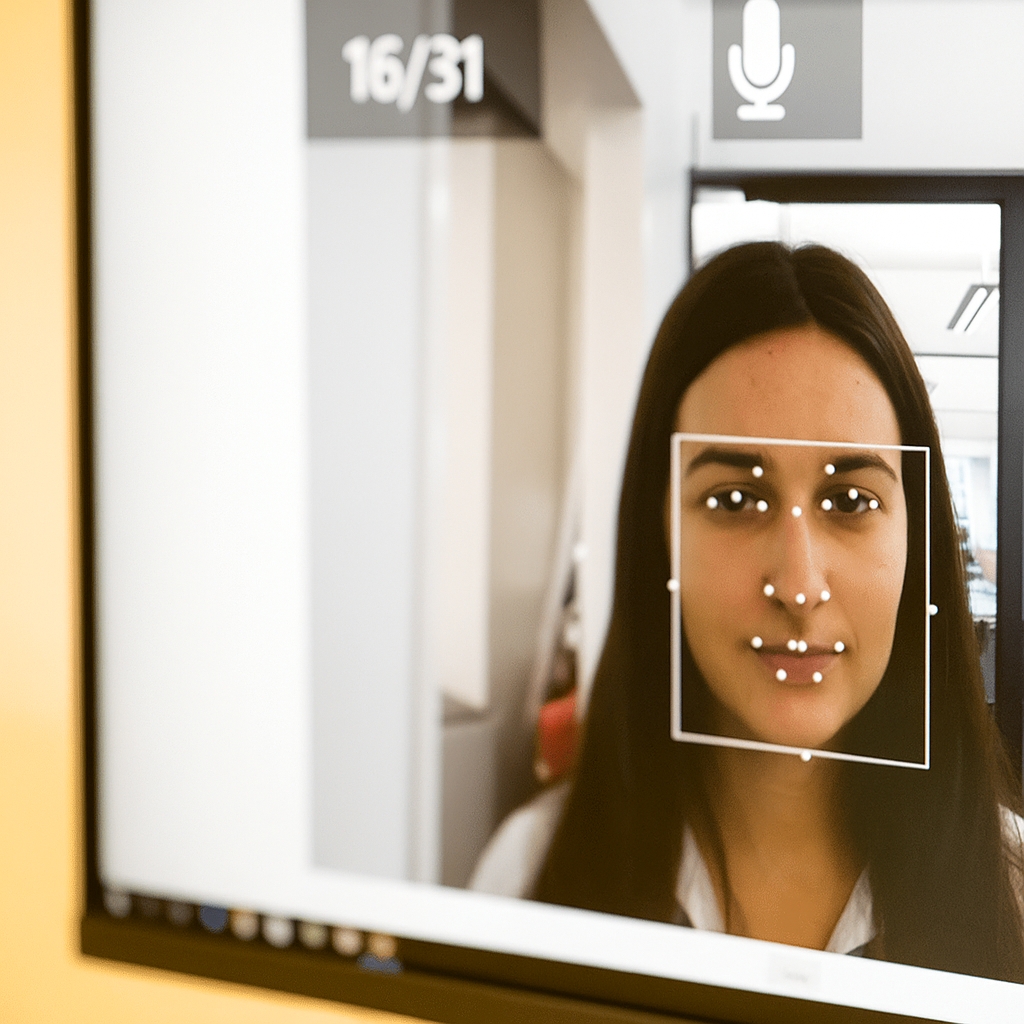
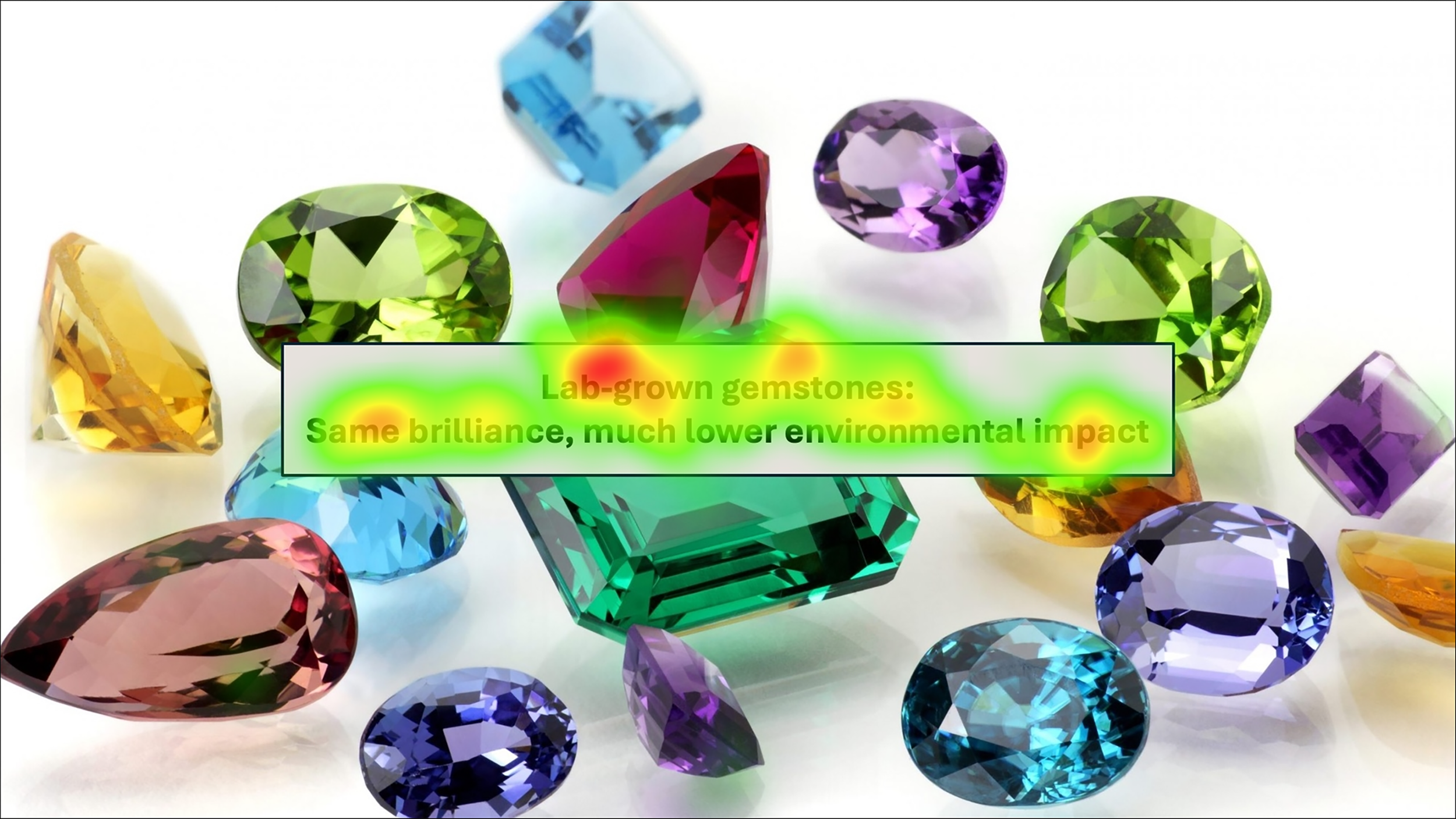
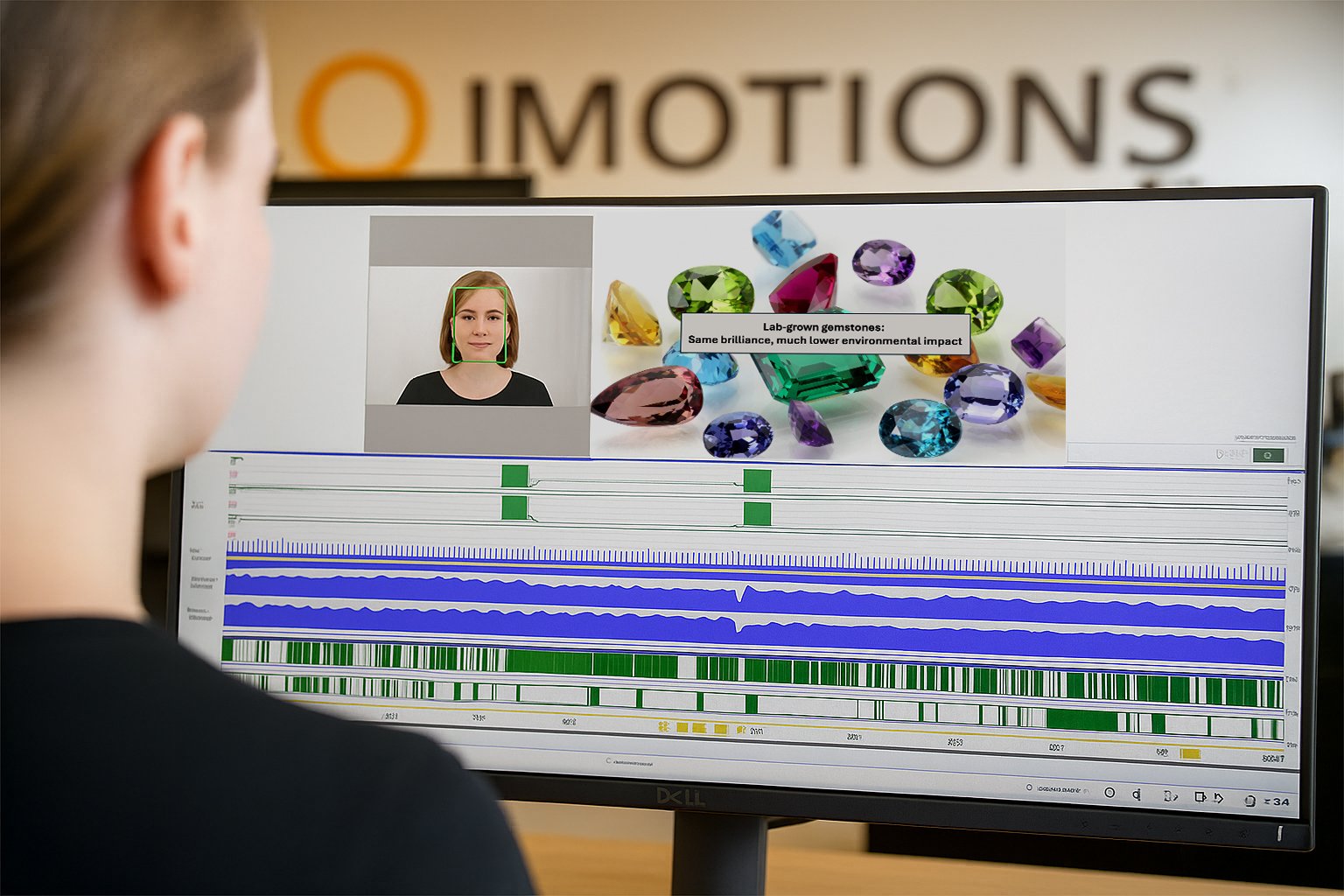
Prototype
Materials & Testing
Slides were shown to participants while tracking their gaze, emotional expressions, and physiological arousal.
AOI helped identify which words and visuals drew attention.
Emotional peaks and confusion points were recorded to understand what landed and what didn’t.
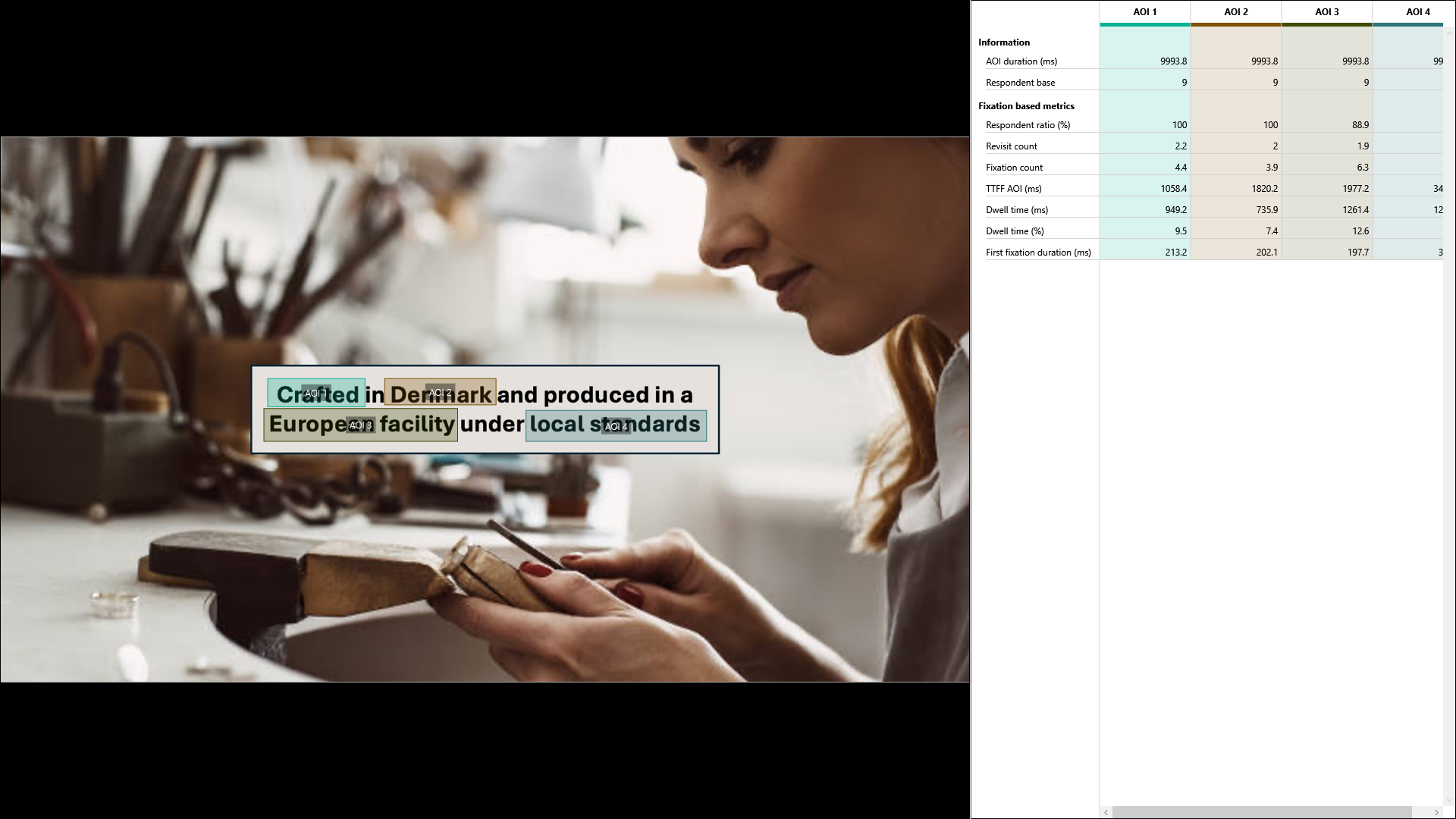

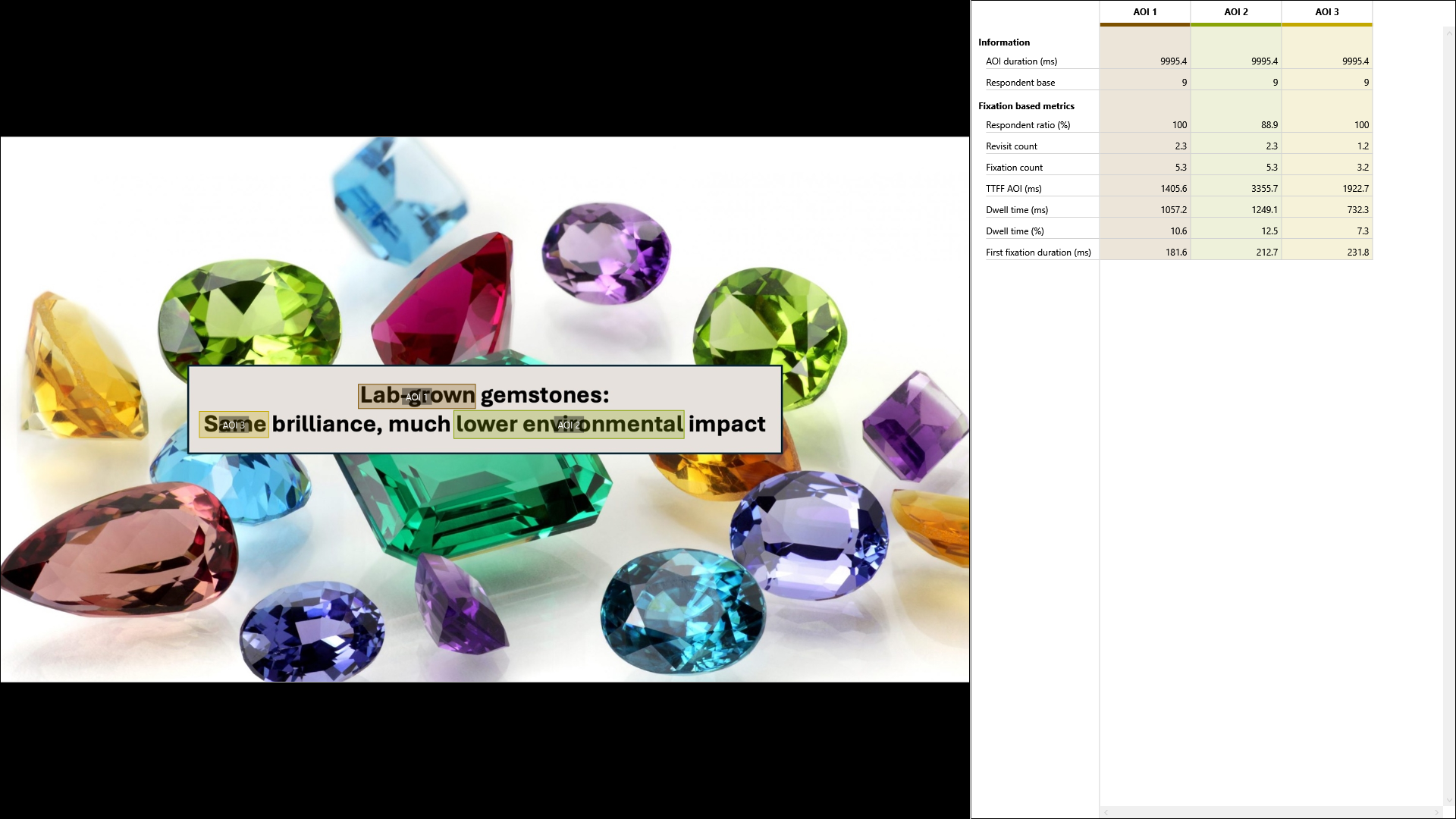
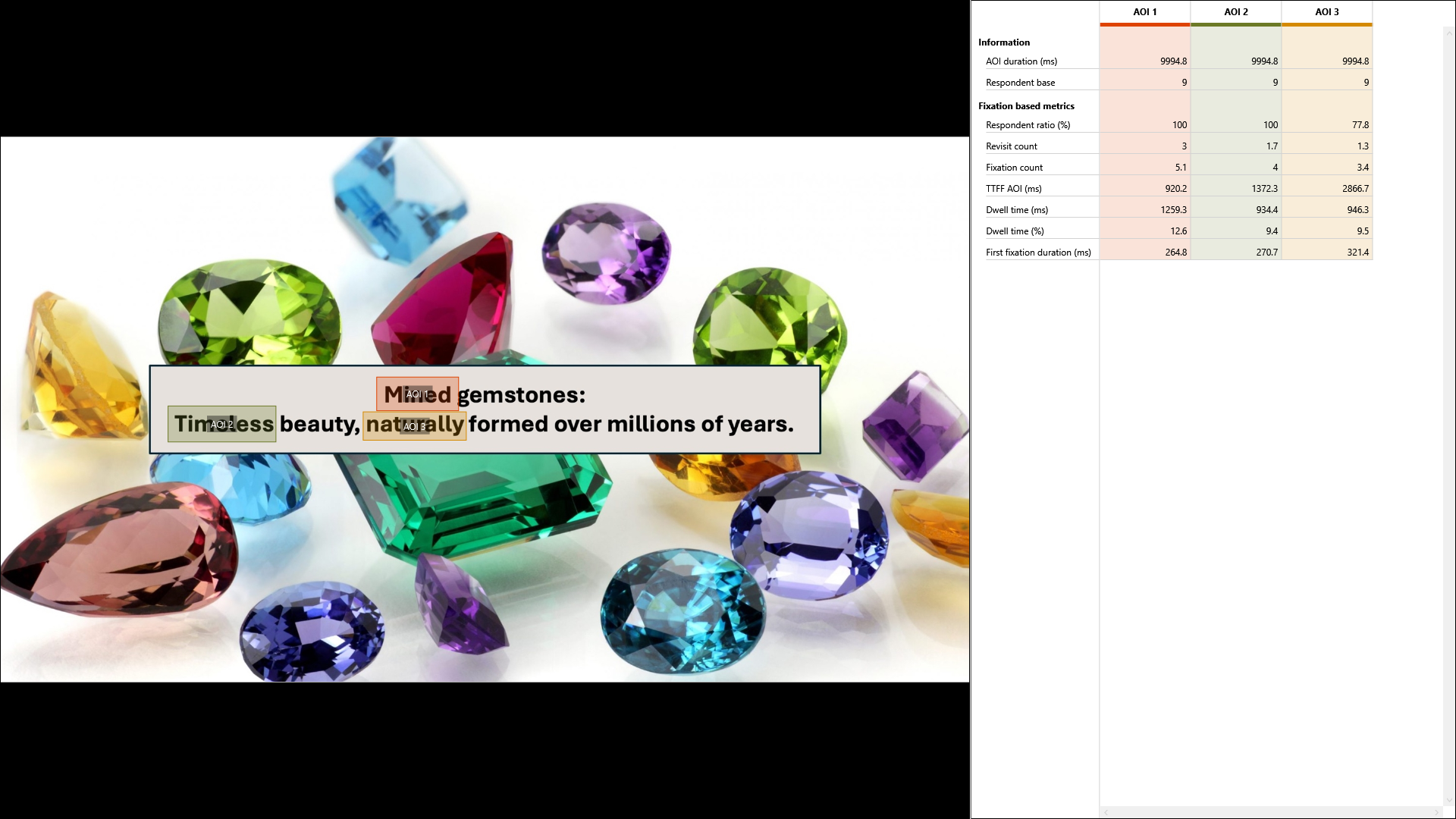
Test
Key Learnings
Concrete trumps abstract: Claims with specific metrics (e.g. “0.08 kg CO₂ per carat”) performed significantly better than vague terms like “sustainable”.
Emotions drive recall: Emotional visuals (e.g. storytelling portraits) kept attention longer and increased positive affect.
Faces > product close-ups: Human connection beat polished packshots.
Mismatch creates mistrust: High-polish visuals with generic claims caused confusion and drop in trust signals.
Too much info = disengagement: Overloaded slides reduced emotional response and increased avoidance behaviour.
Conclusion
Neuromarketing provided clarity where surveys and interviews can’t. It visualised trust—frame by frame, second by second.
For jewellery brands, especially those navigating sustainability, how you say it matters just as much as what you say. Emotional resonance and specificity build credibility. Abstract buzzwords don’t.
This project proved that neuromarketing can be a design tool—not just a research method. It helps shape storytelling that feels human, real, and worthy of trust.
Team
Developed by:
Sine Harwits

